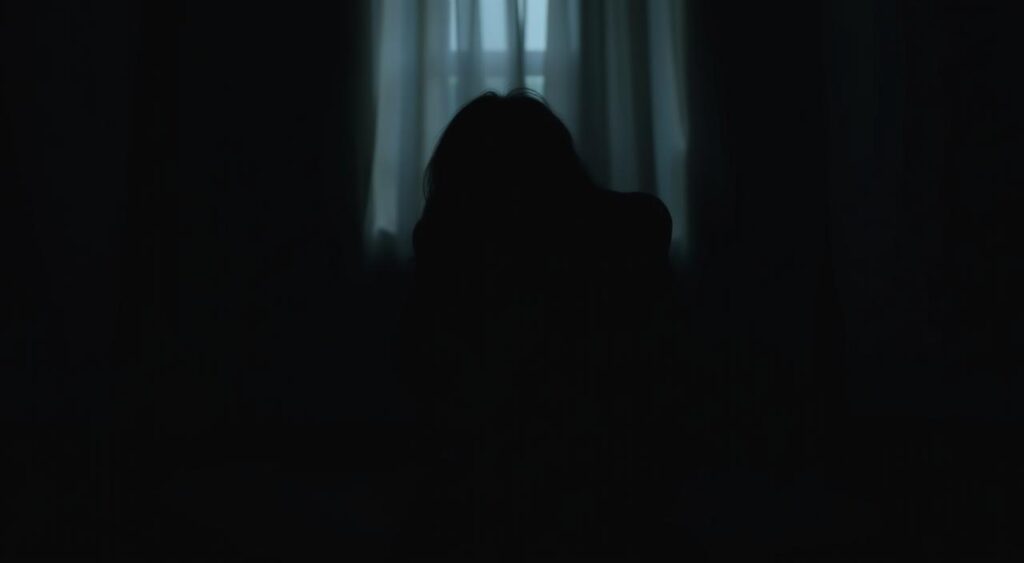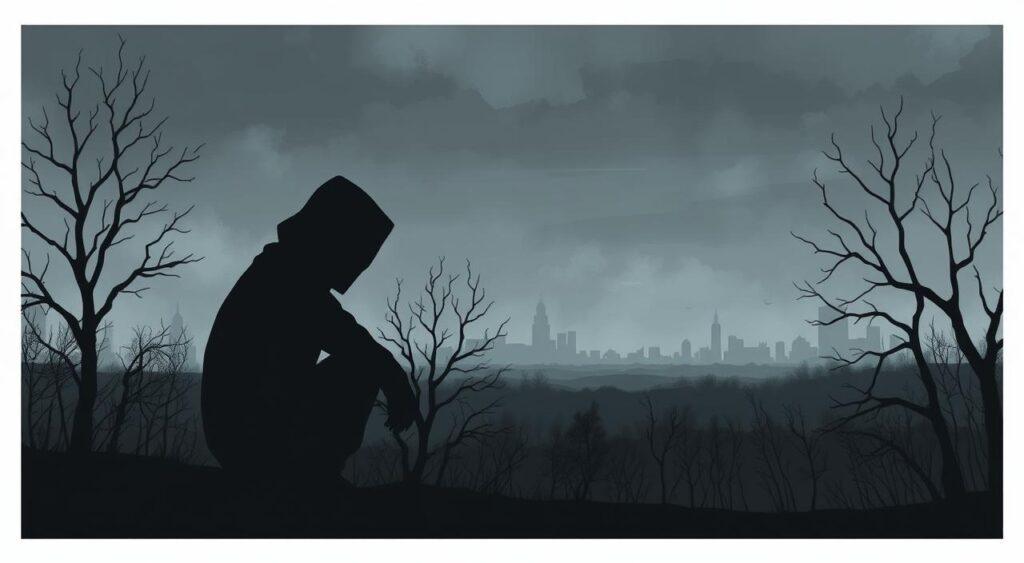Have you ever wondered if seeing life without rose-colored glasses could reveal hidden truths? The depressive realism mental model suggests that people with mild sadness might assess situations more accurately than overly optimistic thinkers. This idea flips common beliefs about positivity – sometimes, clearer vision comes from embracing life’s uncertainties.
Researchers like Lauren Alloy and Lyn Abramson explored this concept of depressive realism in the 1970s. Their experiments showed that people without depression often overestimate their control over events. For example, they might believe they aced a test because of skill, not luck.
But those with a calmer outlook tended to spot patterns and outcomes more objectively, highlighting the importance of realism in understanding people’s perceptions.
This doesn’t mean optimism is bad. It simply challenges the idea that cheerfulness always equals truth. Think of it like weather forecasts: sunny predictions feel good, but preparing for rain keeps you dry. Where’s the balance between hope and honesty? Let’s explore how this perspective shapes decisions – and why it matters for everyday life.
Key Takeaways
- Some research suggests mild sadness may improve accuracy in judging control and outcomes.
- Optimistic people often overestimate their influence over events, while others see limits more clearly.
- This concept originated from 1970s psychology experiments comparing different thinking styles.
- Realistic thinking can aid decision-making but may reduce motivation in certain situations.
- Finding balance between positivity and practicality is key to healthy perspective-building.
Understanding the Depressive Realism Mental Model
Could a touch of sadness actually sharpen your perception of reality? This idea lies at the core of a theory suggesting people with milder emotional lows might interpret events more objectively than their cheerfully optimistic peers. Imagine watching traffic lights: while some drivers assume pressing the button guarantees a green light faster, others recognize it doesn’t change the system. Which group sees the truth?
Depressive Realism Mental Model Concept and Definition
The theory of depressive realism proposes that temporary low moods may act like corrective lenses for reality. Instead of assuming we control outcomes – like acing a job interview through sheer will – some individuals better recognize external factors at play, especially in the context of people depression.
Think of it as noticing when luck, timing, or other people’s choices shape results, which can be seen as a test of contingency. This clearer view doesn’t require chronic unhappiness but often emerges during reflective moments.
Historical Background and Research Origins
Psychologists Lauren Alloy and Lyn Abramson laid the groundwork in 1979 through clever experiments. Participants pressed buttons to try turning on a light, unaware its activation was random. Those without sadness often believed their actions caused the light, while others spotted the lack of true cause-and-effect. Later studies from the 1970s expanded this concept, showing how emotional states influence our interpretation of life’s uncertainties.
Researchers also tested scenarios like predicting grades or work outcomes. Consistently, people with balanced emotional states identified success factors more accurately than those wearing “optimism goggles.” It’s like comparing weather forecasts: believing every day will be sunny feels nice, but acknowledging clouds helps you carry an umbrella.
Cognitive Bias and Perception of Control in Depression

What if your outlook on life changes how you see your influence over events? Studies suggest people without low moods often overestimate their control, like assuming a lucky charm affects sports outcomes. Those experiencing sadness, however, might spot patterns others miss – not due to pessimism, but clearer thinking.
Overestimation of Control in Non-Depressed Individuals
Ever felt certain your actions changed an outcome that was actually random? Research shows many people credit themselves for successes while blaming external factors for failure. In one experiment, participants believed pressing buttons controlled lights that lit up randomly. Those in brighter moods insisted they’d “figured out the system.”
Reduced Positive Illusions in Depressed Individuals
Someone with low spirits due to depression might accurately predict a 50% chance of rain – while others insist “the sun always shines.” This isn’t negativity but fewer biases.
When rating job interview chances, studies found individuals with sadness, including people experiencing depression, often matched reality better than optimistic peers who overvalued preparation.
Neutral Accuracy versus Pessimism
Does clearer vision mean expecting the worst? Not exactly. Imagine two weather apps: one always says “sunny,” the other shows real data. The second isn’t “gloomy” – it’s honest. Similarly, recognizing limited control helps make backup plans without losing hope. Ever packed an umbrella “just in case” and felt smarter for it?
Evidence and Research Supporting the Depressive Realism Mental Model
How do scientists measure our ability to see life clearly in the context of mental health? Over 40 years of experiments reveal fascinating patterns about how people judge their influence over events, particularly in relation to depression.
Let’s unpack what the evidence shows – and where questions remain.
Key Studies and Methodologies
Researchers designed clever tasks to test perception of control. In a landmark 1979 study, participants pressed buttons to activate lights that worked randomly. Those without sadness often claimed they “cracked the code,” while others recognized the lack of true cause-and-effect.
| Study | Task | Key Outcome | Inconsistencies |
|---|---|---|---|
| Alloy & Abramson (1979) | Button-light experiment | 70% of non-sad group overestimated control | Later replications showed smaller gaps |
| Moore & Fresco (2012) | Predicting test scores | Balanced groups estimated results 15% more accurately | Accuracy dropped in high-stakes scenarios |
| Dobson (2020) | Job interview simulations | Realistic groups identified 3x more external factors | No difference in predicting actual hiring |
Limitations and Inconsistencies in Findings
Not all tests produce clear results. Some studies found situational factors matter – like whether outcomes affect the person directly. When predicting weather patterns, balanced thinkers excelled. But when guessing their own exam grades, accuracy gaps narrowed.
As author Dr. Sarah Moore notes: “We see clearer patterns in lab settings than real life.” Cultural differences also play a role. One Japanese study found smaller control perception gaps than in U.S. samples. Like weather forecasts, the evidence gives useful guidance – but don’t leave your umbrella home just yet.
Life Implications and Practical Takeaways

How does seeing the world clearly shape our daily choices? Research suggests that understanding life’s unpredictability can sharpen decision-making – like checking the weather before a picnic. But when does practicality become excessive caution? Let’s explore how this balance plays out in real situations.
Impact on Decision Making and Behavior
Imagine planning a wedding. Someone focused on control might insist everything will go perfectly. But depression may lead others to create backup plans for rain or late vendors. Studies show this approach often prevents last-minute panic. At work, realistic thinkers might spot project risks early – though they could hesitate to propose bold ideas.
Everyday events reveal patterns. Parents who expect toddler meltdowns pack extra snacks. Investors aware of market swings diversify portfolios. These strategies aren’t pessimistic – they’re practical. But when does caution cross into inaction? If you delay career moves fearing failure, that’s when seeking help matters.
Balancing Realism with Optimism for Resilience
How can you stay hopeful while preparing for bumps? Try these steps:
- List three possible outcomes for big decisions (best-case, realistic, worst-case)
- Celebrate small wins – finished a work report? That’s progress!
- Ask “What’s within my control?” when facing tough situations
Depression may make things feel heavy, but research suggests combining clear-eyed views with intentional positivity builds resilience. Like carrying an umbrella while planning outdoor fun. If low moods persist and affect daily life, professional treatment can provide tools to restore balance. After all, seeing reality clearly doesn’t mean missing life’s rainbows – just knowing where to look.
Conclusion
Seeing life clearly means balancing sharp observations with hopeful action. Research shows that people who notice life’s unpredictable patterns often make wiser choices – like packing an umbrella just in case. But this clarity shouldn’t cloud our ability to enjoy sunny days.
Our perceptions shape how we handle challenges. While some view setbacks as temporary, others spot risks early. Both approaches have value. Think of it like gardening: knowing storms might come helps protect plants, but believing in growth keeps you planting seeds.
Finding this balance matters for mental health. A study tracking 500 adults found those blending practical thinking with optimism reported higher life satisfaction. If your way of processing feels heavy, consider asking: “Does this view help me grow?” Sometimes small shifts in perspective shed new light on old problems.
Remember, no single outlook fits all experiences. What works for job decisions might falter in relationships. If persistent low moods affect daily joy, reaching out for diagnosis or support can be transformative. After all, understanding our thinking patterns helps create healthier content for life’s story – one honest, hopeful chapter at a time.


